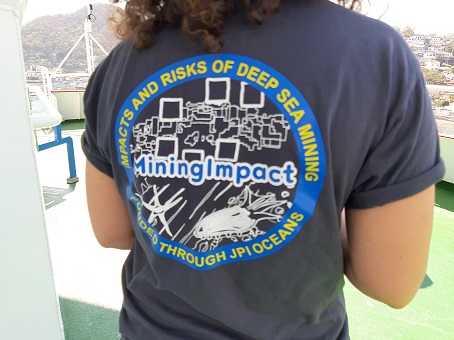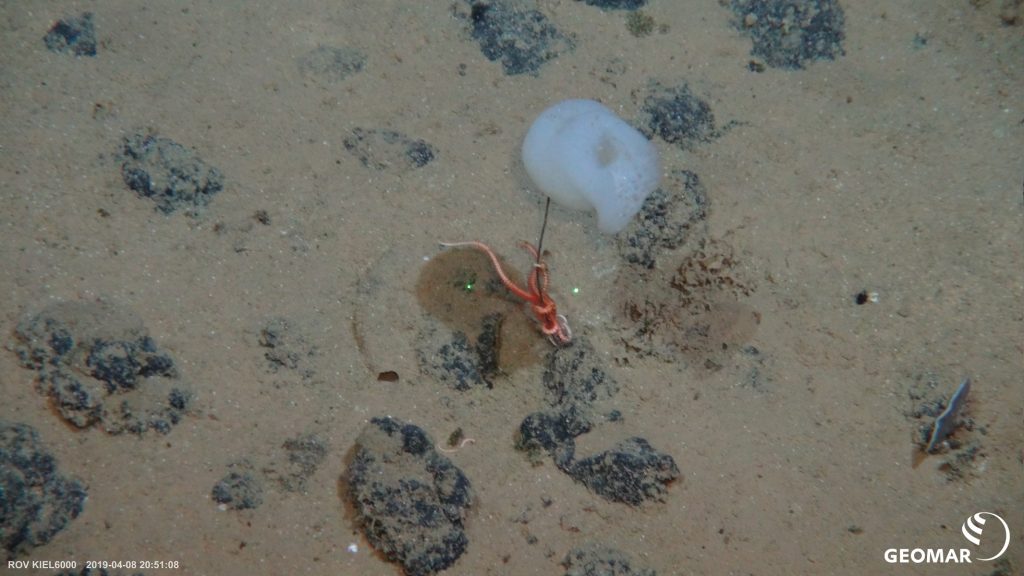At the bottom of the Ocean, in ~4000m water depth they can be found in high abundances: Manganese nodules. Industry and states are interested in these potato-sized objects as a new metal resource. But before commercial mining will start, the potential ecological impacts need to be investigated. Therefore, the project MiningImpact (funded through JPI Oceans) is currently undertaking a three months long research expedition onboard of the German research vessel RV SONNE in the North-East Pacific. We are 38 scientists from Portugal, France, The Netherlands, Belgium and Germany. Our scientific results will feed into the international regulation of potential future mining that is currently drafted by the International Seabed Authority (ISA).
The ISA is administering the seafloor beyond national jurisdiction and closes contracts for exploration of seafloor mineral resources. Most of these contract areas are located in the North-East Pacific between Mexico and Hawaii which explains why we are here now.
Amongst others also Germany, Belgium and France have contracts for exploration here. Our cruise collects baseline data for an upcoming component test of a nodule collector trial. A particular focus is also on testing a variety of different acoustic and optical sensors for monitoring of the sediment cloud that will be produced during nodule mining and which is going to impact the fauna living on the seabed. Hence, our studies will provide essential knowledge for a proper monitoring concept of future mining operations.
Within the next four weeks we are going to post regularly about our work on board, different disciplines and the research questions we are working on to investigate the ecological aspects of deep-sea mining.
Greetings from RV SONNE,
Kristin






